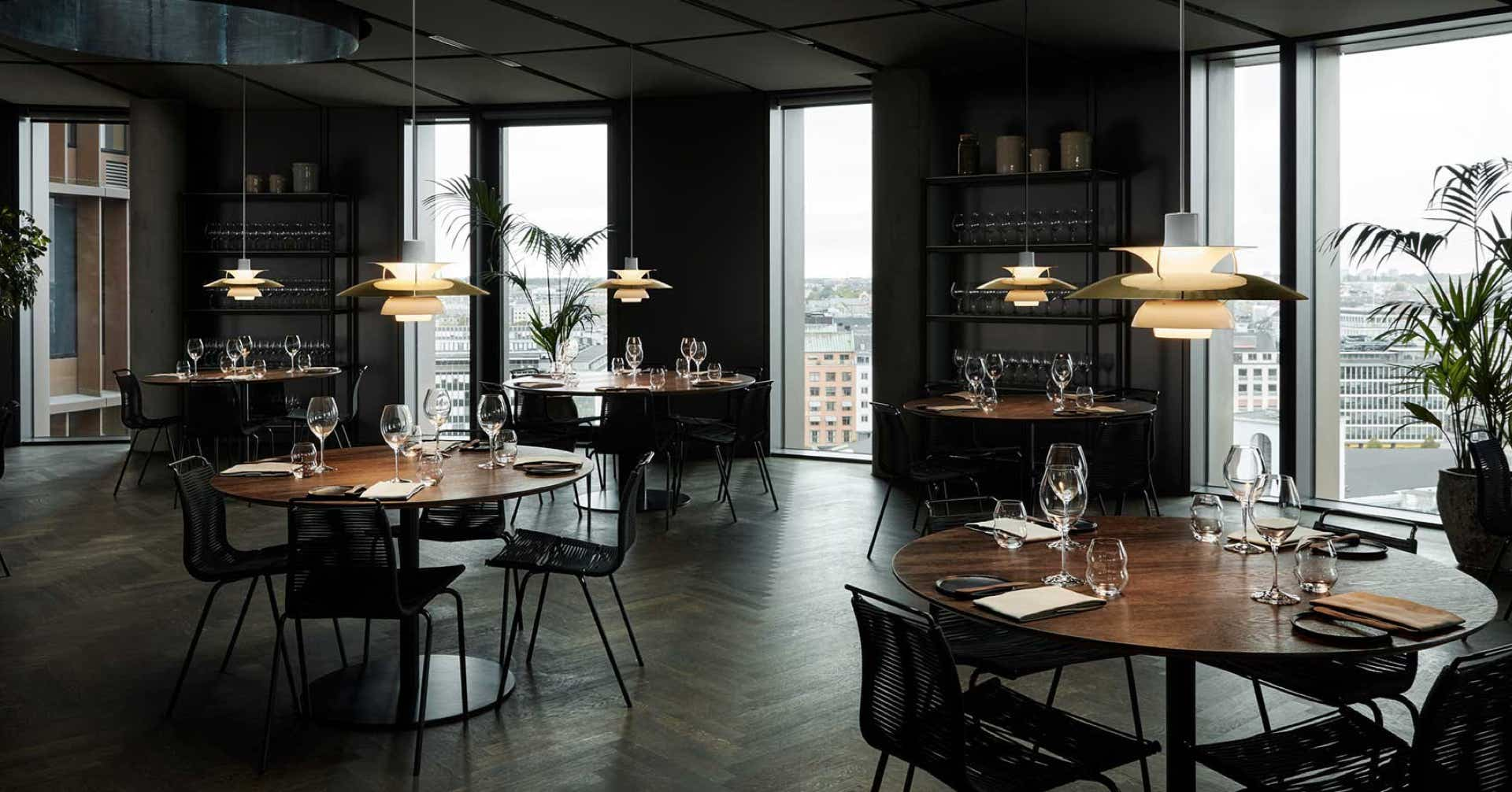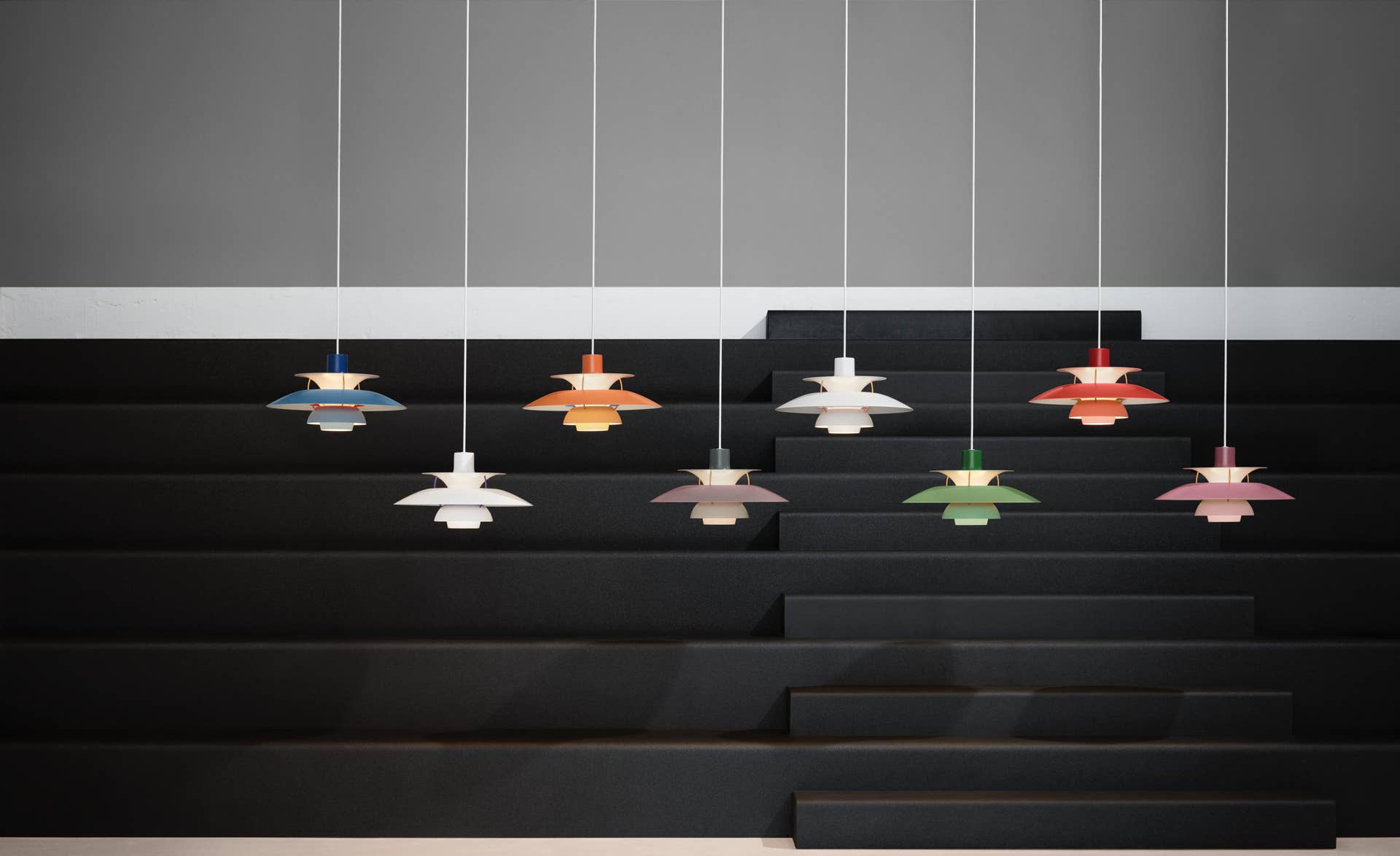The PH5 pendant light was launched in 1958 as an ordinary product and no one suspected that it would become the archetype of PH lamps and the best-selling lamp in the history of Scandinavian design.
The success of the PH5 comes from its striking aesthetics, but also from the impeccable quality of its light: thanks to the clever calculations of Poul Henningsen, the light emitted optimizes the power of the bulb without ever dazzling, whatever the position of the lamp.
To bring artificial light closer to natural light, Poul Henningsen added small lampshades to the red and blue interiors to reinforce these ends of the light spectrum. Finally, to take into account the variable shape of the bulbs, he added a screw system to optimize their vertical positioning.
The name of the PH5 pendant light comes from the 50 cm diameter of its main lampshade. The PH5 Mini pendant light, with a 30 cm diameter lampshade, appeared in 2017.
For the presentation of the PH5, Poul Henningsen declared: “After 33 years of an orthodox relationship with incandescent bulbs, I converted to Islam. For a whole generation, I thought that taking into account the consumer and common sense would prevail, but I had to face the facts and became fatalistic. I accepted my fate and, with Louis Poulsen's permission, designed a PH pendant light that could use all kinds of light sources, from Christmas garlands to 150W metal filament bulbs, without going to the extreme of tube fluorescent in its existing form! »
PH5 Pendant Ø50 x H26,7 cm – light source 1 x E27
PH5 Mini Pendant Ø30 x H16,3 cm – light source 1 x E14
Materials drawn aluminium
Cable 3-metre fabric - piping cover included


Poul Henningsen
Born in Copenhagen, Poul Henningsen's mother was the famous Danish actress Agnes Henningsen. He never graduated as an architect, but studied at the Technical School in Frederiksberg (Denmark) from 1911 to 1914, then at the Technical College in Copenhagen (1914-1917).
He began practicing traditional functionalist architecture, but over the years his professional interests evolved to focus primarily on lighting, which is what makes him most famous. He also expanded his field of activity into areas of writing, becoming a journalist and author. For a short period at the start of World War II, he was the chief architect of the Tivoli Gardens in Copenhagen. But like many other creatives, he was forced to flee Denmark during the German occupation, then quickly became a vital part of the Danish colony of artists living in Sweden.
His long collaboration with Louis Poulsen began in 1925 and lasted until his death. To this day, Louis Poulsen still benefits from his genius. Poul Henningsen was also the first editor-in-chief of the business magazine “NYT”. The CEO of Louis Poulsen at the time, Sophus Kaastrup-Olsen, offered the magazine to PH because he had been fired from the Danish newspaper he worked for (his opinions were too radical).
Poul Henningsen's pioneering work on the relationships between light structures, shadows, glare and color reproduction, compared to man's need for light, remains the foundation of the light theories still practiced by Louis Poulsen.
Price Guarantee
Offering design at the right price is an integral part of our work. If you find the same item at a lower price at another retailer, delivery included, we will not only match it, but even offer you a better price.
How to take advantage of it?
We compare our prices every day with all authorized retailers in Europe. If nevertheless you find cheaper, contact us for a counter-proposal.
We must be able to verify that the item is authentic, new, perfectly identical (size, materials, color, etc.)
and that it is not part of a campaign or temporary destocking.
The valid basis is, for example, a current quote or a direct link to another retailer's website where the lower price is indicated. An email image is invalid, the original email must be forwarded.
The offer does not apply to orders already placed and cannot be combined with any of our other offers or promotions.